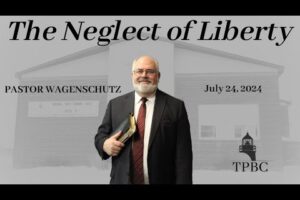In the year 1857, the United States experienced a prayer revival. It’s called the “1857 Prayer Revival” or “Fulton Street Revival.” It started in a very unlikely way and resulted in many people being saved. This revival started when a church on Fulton Street, New York hired a businessman named Jeremiah Lanphier as an outreach minister. “He knocked on doors in the neighborhood and distributed pamphlets and Bibles, but response generally was dismal.”
“One day as I was walking along the streets,” Lanphier wrote in his journal, “the idea was suggested to my mind that an hour of prayer, from twelve to one o’clock, would be beneficial to businessmen.” The idea blossomed: a weekly prayer time, open to anyone, bankers to broom-pushers. Come when you can, leave when you must. Handbills advertised the first meeting–at noon on September 23, 1857.
Lanphier waited for the first attenders. No one showed up for the first ten minutes, twenty, thirty. Then one man straggled in, then another. The hour ended with six men present, praying. The following week there were twenty, the next week forty. Soon a hundred. Some of them wanted to meet every day. Rooms were packed. The church had to ask another church to handle the overflow. When churches ran out of room, the prayer meetings moved to theaters. By March, 1858, the New York Times could report that Burton’s Theater on Chambers Street was packed with a crowd of 3,000 in prayer. Some estimated that up to a million people became Christians in the 1857-58 revival.”
Many well-known Christians were impacted by this revival. D. L. Moody said before he died, he would like to see “the Church of God quickened as it was in ’57.” C.H. Spurgeon preached to his largest crowd – 23,654 people – and churches were filled. Churches began offering evening services and the revival eventually spread to England, Wales, Scotland, Ireland, South Africa, India, and beyond.
(By Josh Wilcox)

